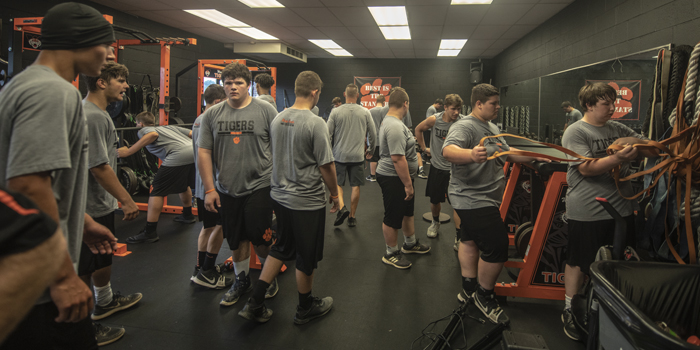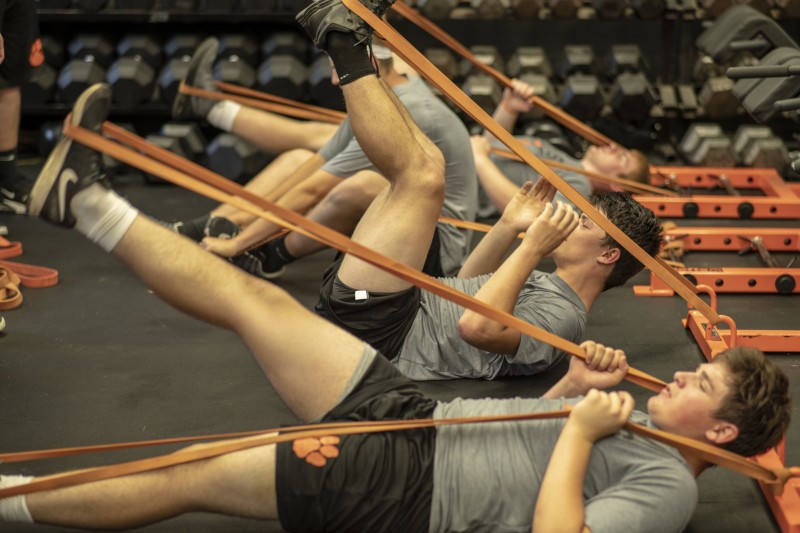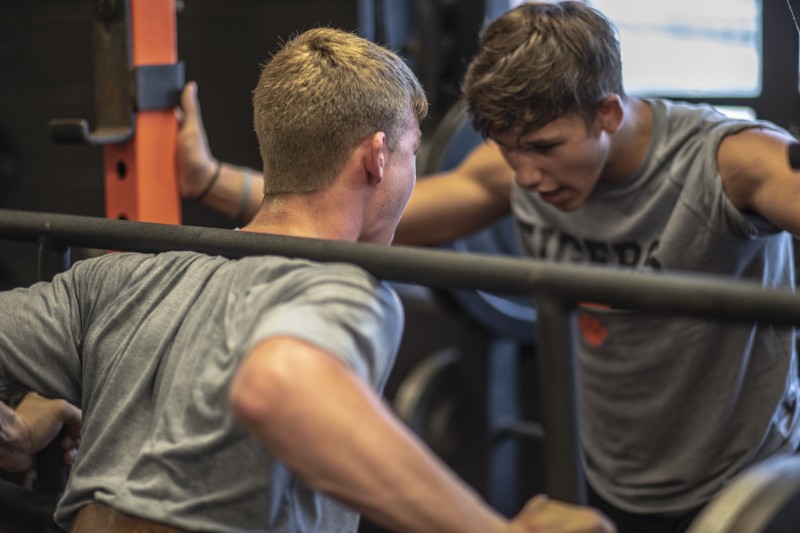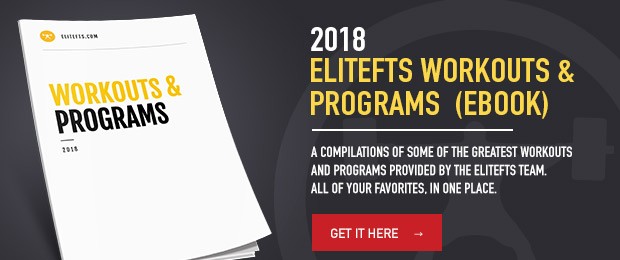
The old saying goes, “You can lead a horse to water, but you can’t make him drink.” The idea is that you can tell someone how to do something, but you can’t make them do it. I’ve been thinking about that idea for a while and how it applies to coaching. Over the past few weeks, while talking to other coaches, athletes, medical professionals, and a few other people whose opinions I trust, I’ve decided that I don’t like that as an axiom. It takes the onus of responsibility off the coach, and if you’re a good coach, the key is disseminating information to an athlete so that it’s not only understandable but also shows the athlete why it would behoove them to do it. Maybe the horse won’t drink water, but does it understand that if it doesn’t, there will be ramifications? And if it does, that there will be positive outcomes? That changes things a whole lot. Knowing what to tell the horse is a lot less important than making the horse understand why the information is important, which is why I think that, while technical proficiency at some level is intrinsically mandatory, I will always pick a coach who has a mastery of the basics and how to apply them so that their clients and athletes actually progress.
RECENT: 3 Non-Traditional Movements to Overcome Weakness in the Overhead Press
The biggest issue when it comes to this sort of thing is people not understanding the difference between programming and coaching. They’re not the same. Not even a little bit. Programming is exactly like it sounds: It’s a program. It deals with numbers. It’s math. Is there more to it? Sure, but at its very basic core, it’s just a word problem for you to figure out, that could probably be done just as easy as plugging some numbers into a template on a website and boom, you have a program. Coaching, on the other hand, is entirely different. I like to explain it like this: coaching is getting someone to understand a feeling that can’t be explained with words. Bear with me.
If I were to ask you to explain to me what green looks like or how fire feels, could you do it? Could you explain to me the exact sensation you feel when you touch an open flame? No. So when you’re coaching someone through a squat, can you get them to understand how a squat is supposed to feel versus telling them how a squat is supposed to look, or what a squat entails? It’s a very different concept, and it requires feedback and a connection to the athlete or group that you are coaching.
In the book, High Performance Coaching by Sir John Whitmore, he states:
“In the development of physical skills, the awareness of bodily sensations may be crucial. In the majority of sports for example, the most effective way to increase individual physical efficiency is for the performer to become increasingly aware of the physical sensation during an activity. This is poorly understood by the majority of sport coaches, who persist in imposing their technique from outside. When kinesthetic awareness is focused on a movement, the immediate discomforts and corresponding inefficiencies in that movement are reduced and soon eliminated. The result is a more fluid and efficient form, with the important advantage that it is geared to the particular performer’s body rather than the 'average' body."
In other words, you can project how you want a squat to look when you’re coaching an athlete, but until you can get them to understand how it should feel versus how you think it should look aesthetically, you aren’t very useful.
Why am I writing this article? Because in an age of technology, where all the information out there is our fingertips, I constantly see people wrongly conflate data with experience. I liken it to wanting a sponsorship. Picture this: You’re super strong. You can deadlift 900 pounds. You want a sponsorship. Okay, great. Who knows you can deadlift 900 pounds? Nobody? Strike one. Do you have a personality or are you about as exciting as a box of rocks? If you’re a box of rocks, strike two. Are you actively seeking out other individuals to share your experiences with and help them become better? No? Strike three. You’re now a useless strong person. It’s the same with coaching. Great, you have a master's degree, your CSCS, and a plethora of other letters behind your name. Can you actually walk into a team training facility and make those athletes understand the information you have stored in your head? No? Then what good are you? Like I said at the beginning of this article, I’ll take a coach who has mastery of a few movements over someone with an entire alphabet behind their name and a general knowledge of a lot of stuff.
So, now the question is, how do you become a useful coach? The first step is to increase your emotional intelligence. What is emotional intelligence? Psychology.com defines emotional intelligence as, “the ability to identify and manage your own emotions and the emotions of others. It is generally said to include three skills: emotional awareness; the ability to harness emotions and apply them to tasks like thinking and problem solving; and the ability to manage emotions, which includes regulating your own emotions and cheering up or calming down other people.” In other words, you need to learn how to read your athletes, match their energy levels, ask for feedback, and then be able to adjust things based on that feedback.

For example, if someone can’t deadlift because they can’t hip hinge, showing them 100 times how to hip hinge is an exercise in futility. Instead, just make it easier by involving fewer joints. It’s a lot easier to take the knees out of the equation and hammer the actual hinge pattern, but I have seen coaches get extremely frustrated with athletes because no matter how many times they try to tell them how to do something, they don’t understand. Make it easier and show the athlete what they’re supposed to feel, in a way they can digest, and watch the magic happen. A lot of coaches forget that what we do is simple to us, but it may be more confusing than calculus to most people.
The second step is hammering the basics. Before you go search YouTube for the next contralateral multi-joint stabilization exercise that’s going to blow up your Instagram, here’s a thought: make sure you know basic movement patterns and that you can coach them in your sleep without even thinking about it. All too often I see coaches posting things with their athletes that they don’t really understand. I know they don’t understand it because the patterning is terrible, weaknesses are showing left and right, and most of all, there is no explanation in the description or any coaching going on during the movement. Being an expert in a few things will always trump being a Renaissance man or woman.
The last step to being an effective coach may be cliché, but it’s absolutely necessary: Be invested. Wake up every morning wanting to pass on your knowledge, or get out of the industry. As Clint Darden said, go all in or quit. It might be a hard lesson for a lot of people, but it’s the truth. If you’re not invested in your athletes, in your team, and in your fellow coaches, you’re nothing but a bad apple that’s going to ruin the entire bushel. If you’re watching social media and seeing the glamorous five percent of a strength coach's day, but you’re not willing to do the other 95% of the grueling work, then being a strength coach isn’t the field for you. I don’t want this to make someone waiver from their dreams of being a strength coach, but I think a lot of people in the industry need to self-reflect and be cognizant of their decision to let someone trust them with not only their bodies, but also their confidence and ultimately their mental health. Connect with your athletes and understand how to relate to them. You’ll get a lot more out of them by being honest, open, and constantly receiving and interpreting feedback than you will with the perfectly written program.











